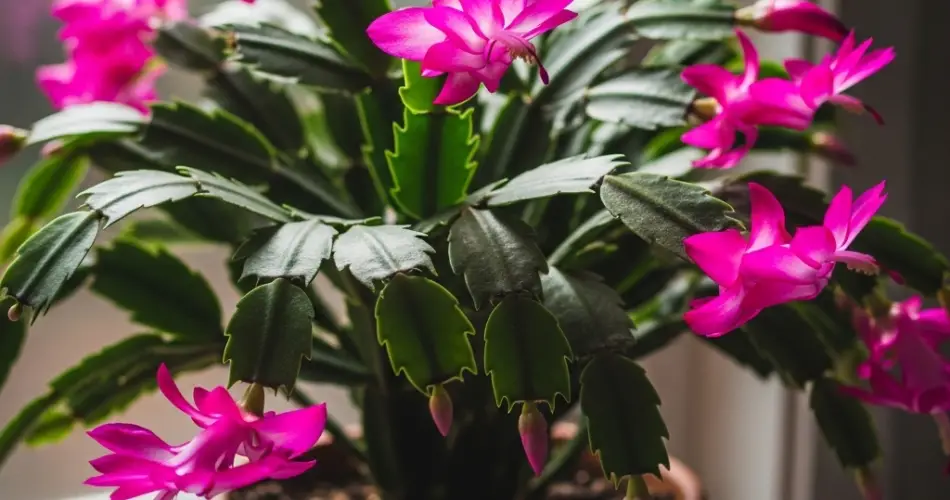The Christmas cactus (Schlumbergera spp.) is a popular indoor plant known for its beautiful, festive blooms and unique segmented stems. While generally low-maintenance, Christmas cacti can become root-bound or overgrown over time. When this happens, repotting becomes essential to keep the plant healthy and encourage blooming. If your Christmas cactus has outgrown its pot, looks crowded, or isn’t thriving as it used to, it’s probably time to give it more room to grow. Here’s a step-by-step guide to repotting an overgrown Christmas cactus.
When to Re-pot a Christmas Cactus
Christmas cacti don’t need frequent repotting and often prefer slightly snug conditions. However, there are signs it’s time to give the plant a new home:
-
Roots are growing out of the drainage holes
-
The plant is top-heavy or unstable
-
Water drains too quickly or not at all
-
The plant has not bloomed in several seasons despite good care
-
Soil appears compacted or depleted
The best time to repot is in late winter or early spring, after the plant has finished blooming. Avoid repotting during the flowering season to reduce the risk of bud drop.
Materials You’ll Need
-
A new pot (1–2 inches larger in diameter than the current one)
-
Fresh, well-draining potting mix
-
Gloves (optional)
-
Clean pruning shears or scissors
-
A spoon or stick (to help loosen the soil)
A shallow, wide pot is ideal, as Christmas cacti have shallow root systems. Make sure it has drainage holes to prevent root rot.
Choosing the Right Soil
Christmas cacti are not true desert cacti—they are epiphytes that grow in the shady, humid forests of Brazil. They require a light, well-draining soil mix that retains some moisture without becoming soggy.
Recommended mix:
-
2 parts cactus or succulent mix
-
1 part perlite or pumice
-
Optional: 1 part peat moss or coconut coir for moisture retention
Avoid heavy or dense soils that retain too much water, as these can lead to root rot.
Step-by-Step Guide to Repotting
1. Prepare the New Pot
Fill the bottom of the new pot with a layer of fresh soil mix. This gives the roots a fresh bed and helps support the plant once it’s in place.
2. Remove the Cactus from Its Current Pot
Gently turn the plant sideways and tap the sides or squeeze the pot to loosen the root ball. If the plant is stubborn, use a spoon or stick to gently loosen the edges. Carefully slide the plant out, supporting the base and stems to avoid breakage.
3. Examine the Roots
Once removed, inspect the roots for signs of damage, rot, or overcrowding. Trim off any mushy, blackened, or dead roots with clean scissors. If the roots are tightly wound or circling the root ball, gently tease them apart to encourage outward growth.
4. Place the Plant in the New Pot
Set the plant in the center of the new pot. Adjust the soil level beneath it so that the top of the root ball is about an inch below the rim of the pot. Fill in around the sides with fresh potting mix, pressing it gently to eliminate air pockets without compacting it too much.
5. Water Lightly
After repotting, water the plant lightly to help settle the soil around the roots. Avoid soaking the plant—too much water can stress freshly trimmed roots. Let the top inch of soil dry out before watering again.
Post-Repotting Care
-
Light: Place the plant in bright, indirect light while it adjusts to the new pot. Avoid direct sunlight for a week or two to reduce transplant stress.
-
Watering: Resume regular watering once the plant shows signs of new growth. Let the soil partially dry out between waterings.
-
Fertilizing: Wait about 4 weeks before fertilizing, then feed monthly with a diluted houseplant fertilizer during the growing season (spring to early fall).
-
Support: If your cactus is especially large or heavy, consider using small stakes or a support ring until the roots re-establish.
Dividing an Overgrown Christmas Cactus
If your plant is especially large or you want to propagate it, repotting is a great time to divide it.
How to divide:
-
Look for natural breaks in the plant where you can gently separate the sections.
-
Each section should have a healthy root system and several segments.
-
Pot the divisions in smaller containers with fresh soil and follow the same care routine.
Dividing allows you to create new plants to share with friends or expand your indoor garden.
Conclusion
Repotting an overgrown Christmas cactus helps refresh the plant’s environment, encourages healthier growth, and supports better blooming in the future. With proper timing, the right soil mix, and gentle handling, you can make the process easy and stress-free. Whether you’re giving your plant more room or dividing it into multiple pots, repotting will revitalize your Christmas cactus and keep it thriving for many seasons to come.



